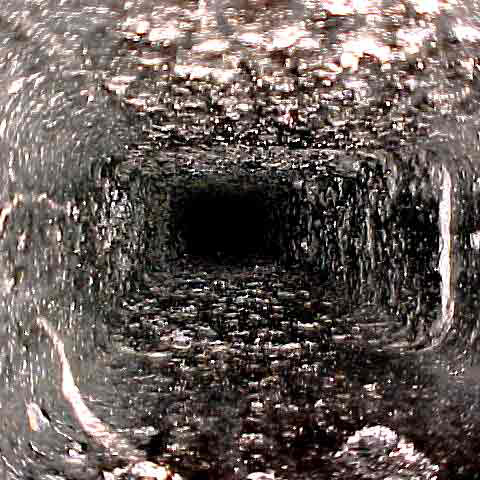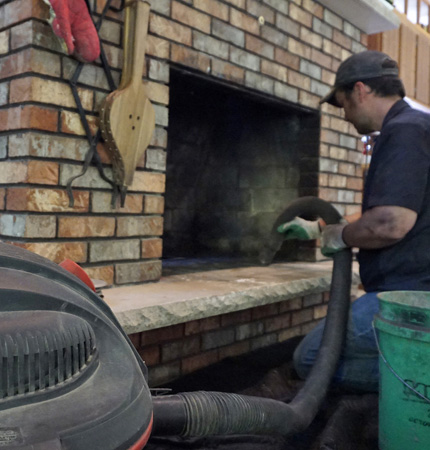Creosote and the Damage it Can Do to Your Venting System
How Creosote Can Damage a Chimney
 All fireplaces and vent systems need regular maintenance to ensure safe and efficient operation. Chimneys that vent wood-burning fireplaces, however, need very specific maintenance because of the creosote buildup caused by burning wood.
All fireplaces and vent systems need regular maintenance to ensure safe and efficient operation. Chimneys that vent wood-burning fireplaces, however, need very specific maintenance because of the creosote buildup caused by burning wood.
About creosote
Creosote is a highly flammable substance that is created when wood smoke vaporizes inside a chimney. The condensation hardens and adheres to the walls of the chimney. While you can reduce to some degree the amount of smoke you create when burning a fire, you can’t completely prevent creosote from forming if you use the fireplace. As the level of creosote builds in your chimney, the likelihood of damage and danger increase.
Chimney fire
More than 25,000 chimney fires happen each year in America, and almost all of them are caused by creosote igniting. A chimney fire can range from unnoticed to catastrophic. Small chimney fires often start and then go out on their own before anybody notices them. Incremental damage to the chimney from small fires over time can lead to a large fire down the line and/or the need to completely rebuild the chimney.
Fire-safety agencies across America recommend that chimneys with wood-burning fireplaces be professionally cleaned on an annual basis. This is your best preventative against chimney fires.
Venting obstruction

As more and more creosote builds up inside the flue, air flow is hampered to greater degrees. When this happens, there are two potential dangers: one, smoke can back up into the house because it doesn’t have a clear path to the outside; and two, deadly carbon monoxide (CO) also can enter the home.
If you have a CO monitor, it will alert you when unsafe levels of this gas are present. That will save your life, but it won’t solve the core problem. If you don’t have a CO monitor, the result could be tragic. You do need a monitor, but you also need to have creosote removed regularly from your chimney. with a professional chimney sweep.
Corrosion
Creosote is acidic and therefore will eventually begin to affect the inside of the flue or the chimney liner. The concern here is that there’s no way for the average homeowner to know the level of damage, if any, that’s being done to the chimney at any given time. This is another reason to schedule regular cleaning
Removing creosote
Only a trained, experienced technician should ever be allowed to clean your chimney. Professionals use specialized video equipment as well as rods, chimney brushes and vacuums to thoroughly inspect and clean a chimney. Also during this inspection, they can spot early signs of damage that can be fixed before an expensive problem exists.
As noted earlier, you have some control over how much smoke your fires produce and therefore how much creosote ends up inside your chimney. The trick is to burn only seasoned (dry) wood logs. Damp logs create huge amounts of smoke and toxins, where seasoned wood keeps smoke to a minimum. Don’t think wet wood will dry out inside a hot fireplace. It won’t, and you’ll be rapidly adding to your creosote problem.
Is it time to have your chimney looked at? Chimney Specialists of Highland, WI, provides homeowners with top-level chimney cleaning services from our nationally certified technicians. We also offer chimney inspection, repair and rebuilding to ensure your fireplace is ready to go any time you need it. Call us at (608) 929-4887 with questions or to arrange an appointment.







